|
We’ve just added a whole slew of artisan Spanish pantry goods, along with a few Peruvian ingredients to MarxPantry.com. |
||
|
|
||
| From Spain | ||
| Spanish Sweets: | ||
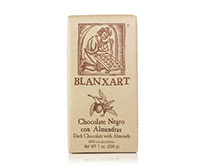 |
||
|
|
||
 |
 |
|
|
|
||
|
More Spanish Ingredients: |
||
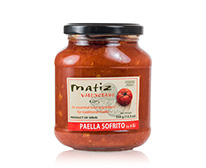 |
 |
|
|
|
||
 |
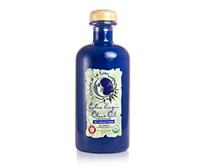 |
|
|
|
||
 |
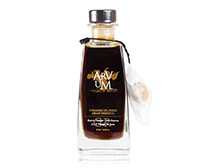 |
|
Spanish Paella Broths |
||
|
|
||
New to Marx Foods: More Wild Produce!
|
We’ve been very busy adding new products to the stores for you to enjoy! Here’s a bunch of new Spring produce (most of it wild foraged!) that we’ll be offering as soon as it comes into season. |
|
|
|
|
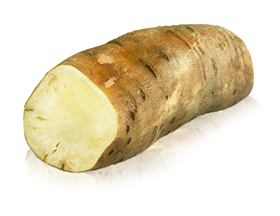 |
 |
|
Crisp & juicy like jicama, but quite sweet, this unusual root stores its starches as inulin, which our bodies can’t break down, so it’s lower calorie than you’d think. Everyone in the office really liked it. |
Piney, herby, and citrusy, spruce tips are becoming all-the-rage in fine dining restaurants and high end cocktails. They’re typically in season from mid April to mid May. |
|
|
|
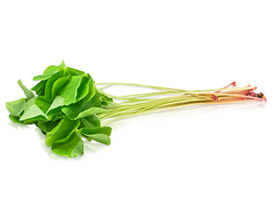 |
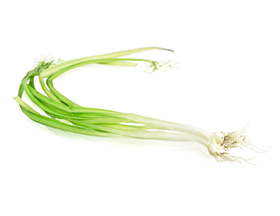 |
|
Wild Wood Sorrel Wild sorrel has a very tart flavor (with mild lemon notes) that really gets the saliva going. It’s typically in season from March to May. |
Wild Onions Not to be confused with delicious, delicious ramps. Wild onions have a much more mild onion/leek flavor and a crisper texture. They’re mild enough to be enjoyed raw, if you’re in the mood. Typically in season from March to Mid-May |
The History of Merino Sheep in New Zealand
Merino lamb meat has a unique, more elegant & subtle flavor than conventional lamb without the typical gameyness. Here’s some information about the breed’s history.
The Original Spanish Merino – A National Treasure
The Merino sheep breed originated in Spain – appearing in records as far back as the 12th century. The prevailing belief appears to be that it probably developed from sheep brought to Spain by the Moors.
Merino have been renowned for their superior wool for centuries. The Spanish government considered them such a precious resource and economic advantage that for a long time exporting Merino sheep from the country was an offense punishable by death.
Merino Spread Across the World
At some point the Merino stopped being such a dominating economic force in Spain, and the rules were relaxed to allow export. The breed spread throughout Europe and was bred for different characteristics in different areas. There are now a wide variety of Merino types spread across the world.
Merino Sheep Arrive in the Colonies
In the 19th century the breed was exported to North America and Australia. In the 1840s through the early 1860s Merino were brought across the Tasman Sea from Australia to New Zealand in large numbers to establish the NZ Merino industry.
Before the advent of refrigerated shipping containers, it wasn’t possible to export lamb meat from Australia and New Zealand to major markets in Europe and the US without it spoiling. Wool doesn’t spoil, so the primary economic impetus for farmers to raise sheep was for the wool export market – making Merino the breed of choice.
The History of Merino in New Zealand
Because the Merino brought over from Australia were sometimes of questionable quality, New Zealand farmers looking to improve the quality of their herd genetics started importing small numbers of animals from Europe and the US. As a result of these breeding programs by the 1880s New Zealand Merino could be considered a distinct variety from the sheep raised in Australia.
Unfortunately as time went on various economic factors encouraged New Zealand farmers to move away from the Merino breed.
Merino sheep were originally adapted to Spain’s more arid climate. It turned out that in New Zealand’s more moist environment the breed was prone to an illness known as “footrot”, an infection of the tissue inside the hoof. This made them less suited to being raised in the lowlands that make up the majority of New Zealand’s sheep country.
A wool production system known as machine worsting was also on the rise – where machines gin & comb long wool to remove abnormally short fibers and force the long ones to lie parallel. The resulting wool is much more uniform than the kind typically used in sweaters. Unfortunately, while Merino wool was still considered a superior product in general, its fibers were too delicate for the worsting machines of this era.
Finally, advancements in shipping eventually made meat export possible. While British sheep breeds were developed for meat production, Merino sheep weren’t considered a meat breed. Their wool was so superb that breeders had remained singularly focused on improving it for centuries.
As a result of meat export becoming possible and industry demand for wool that was stronger rather than softer, many New Zealand farmers started cross-breeding their Merino herds with British breeds to produce mixed breeds that were less lean, had meat qualities demanded by the primary markets, and coarser wool.
As of the early 2000’s, pure Merino sheep had become a minority breed in New Zealand, accounting for just 3 million of the 39 million sheep raised in the country. These Merino are primarily raised in New Zealand’s cooler high country, where footrot isn’t a concern.
The Discovery of Merino Meat
Merino continued to be raised exclusively as a wool breed until the 1990s, when tougher farming conditions forced the farmers to diversify into the meat market. Merino meat was simply sold into the commodity meat market as “lamb” without any special fanfare.
Merino lamb’s unique flavor and texture were well known to Merino famers, who dined on it themselves and served it to guests to their farms as a special delicacy. At some point, all off their guests’ exclamations clicked, and the farmers realized Merino’s unique eating qualities were something that should be trumpeted to the world, not hidden behind a generic label.
In 2011 a special partnership was formed between the Merino farmers’ wool company & meat processors to start the world’s first breed specific program for lamb. SILERE merino lamb is hand selected for the best eating qualities and showcases the best attributes of this very special breed.
Through the SILERE program, New Zealand chefs have discovered modern Merino’s cleaner, leaner, more elegant flavor and silky texture. It is quickly becoming a fixture on fine dining menus there. We are proud to introduce this new delicacy to the American market.
Sources:
Hugh Stringleman and Robert Peden. ‘Sheep farming – The Merino – the earliest breed’, Te Ara – the Encyclopedia of New Zealand, updated 13-Jul-12
URL: http://www.TeAra.govt.nz/en/sheep-farming/page-3
Encyclopedia Britannica ‘Merino’, Encyclopedia Britannica, updated 04-Jul-08
URL: http://www.britannica.com/EBchecked/topic/376088/Merino
What’s the Difference Between Merino & Conventional Lamb?
Conventional/commodity lamb is generally a crossbreed, whereas Merino is a specific breed of sheep cultivated for its premium wool and meat. In this respect it’s analogous to premium beef breeds (like Black Angus) and heritage pork (Kurobuta, Iberico, etc).
When compared to common lamb, Merino produce softer, leaner, finer textured & clean flavored meat prized by chefs and finer wool (used in high end apparel). They tend to be slaughtered at an older age than conventional lamb.
Shearing Practices:
Conventional lambs are usually sheared only once, at 4-6 months, producing a coarse wool used in carpets and other similar applications.
Merino are sheared at 9-12 months, when their fleece has grown to its full length (75mm or longer). Depending on their wool growth, they may be sheared a second time before being processed for meat.
Each Merino produces approximately two kilograms (4.4lbs) or more of wool per shearing.
In between their full shearings, they may be brought in for a brief localized shear around the groin area (a practice referred to as “crutching”) to help them stay clean and healthy.
Habitat & Diet:
Conventional lamb is often raised in the lowlands, but Merino have thicker fleeces and prefer the cooler temperatures in high alpine ranges.
Merino lambs roam freely in massive pastures up in the mountains. They dine on alpine herbs and native grasses.
Our Favorite Autumn Eats (and Drinks!)
| Living in the Pacific Northwest, sometimes it feels like it takes a while for the seasons to fully transition. But once they do? It is on! We get especially excited for autumn to roll around each year so we can pull out some of our favorite cozy foods, drinks, recipes, and ingredients. What are our favorites? So glad you asked! |
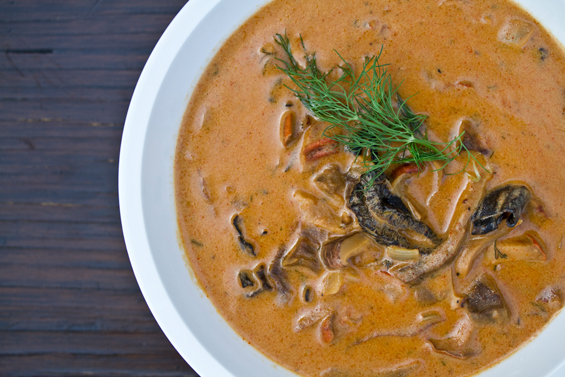 |
| Katy: Easy: butter and mushrooms. Or butter and onions. Or butter and onions and rosemary. Butter. Beef Burgundy… no… Beef Stroganoff… no … Stuffed Squash… no… Mushroom Soup … no… CAN’T DECIDE. I love fall. |
| Veronica: Lately I’ve been getting into making soups and consistently keeping a batch of fire cider ready to drink. For both, onions, ginger, apple cider vinegar, and vegetable stock are must haves. Oh, and sweet potatoes! |
| Justin: I’m all about Squash Soup and Wild Mushrooms |
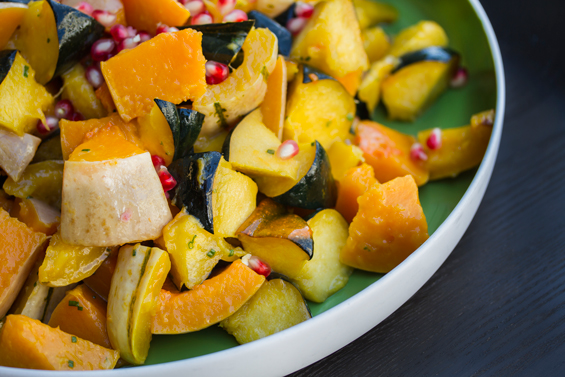 |
| Kim: I love all the squashes, right up until I get sick of all the squashes. I love sweet potatoes. I love persimmons so much. Is it a big cliché that these are all orange? I also love all things maple, so glazing sturdy rings of Delicata with a maple cardamom glaze and then roasting them is a fall favorite at my house. |
| Jake: My favorite ingredients to cook with in the fall are hearty squashes and root vegetables, just like everyone else! Yet, I like to use them in different ways than roasted with sage and brown butter, as is customary. Shaving pumpkin super thin, salting it to soften, and making a sweet and savory fish sauce caramel, candied pumpkin seeds, parsley and bitter greens is my favorite rendition. |
 |
| Annie: Pie!! Love making them from scratch! Also, any kind of squash! I love adding it in to a big batch of roasted vegetables (potatoes, onions, Brussels sprouts, carrots, peppers) and adding that to salads. |
| Becca: I pretty much want to make all of the apple and pumpkin baked goods. Apple pie! Pumpkin Pie! Pumpkin Bread! Apple Cake! Pumpkin Cake! Apple Pancakes! Oh, and gimme all the cinnamon while you’re at it. |
 |
| Ryan: I get really into cocktail ingredients; especially things that go with brown cocktails like bitters and grenadine. |
| Matthew: I go for the obvious ones – orange zest, spices (vanilla, cardamom, star anise, nutmeg, cloves, cinnamon, etc), lentils, porcinis & braising cuts.I also actually make one of my favorite fall recipes before fall even hits, because it takes time to age. Gdansk Vodka from “Salt, Sugar & Spice” by Diana Henry is basically an aged cocktail flavored with citrus zest (lemon & orange) & autumn spices (star anise, mace, juniper berries, cloves, cardamom & cinnamon).
Though it takes a bit of time to zest 8 citrus fruit, the hardest parts are really finding whole blade mace (check any Indian markets in your area) and waiting the two and a half months necessary for it to age to the point where you can drink it. Make it ahead though and you’ll be a superstar at holiday gatherings, it’s superb. |
 |
| Tracy: I get really into cooking different types of poultry this time of year. I think Thanksgiving is some of the inspiration behind that, but mostly it’s because game bird hunting season starts in Montana in early October. That is really the only type of hunting my parents have the energy for anymore. Therefore, I’m accustomed to having many types of wild bird during the fall. Such as blue grouse, sage grouse, pheasant, and Hungarian partridge. Also, SWEET POTATOES. A sweet potato baked with butter, brown sugar, salt and pepper. Simple, but one of my most favorite things ever. |
| What are your favorite things to eat when fall rolls around? |
 |
Becca Lee wrangles our social media accounts, blogger contests, and general marketing work as the Marketing Coordinator for Marx Foods. You can check out one of her many hair colors and read more about her (and her ridiculous sweet tooth) here. | |
OUR FIRST TIME WITH EDIBLE INSECTS
 |
| Eating Edible Insects for the first time is something you just don’t forget. Whether we were excited, nervous, or downright queasy about trying these creepy crawly yet super sustainable ingredients, we all lived to tell the tale! |
| Kim: I’d been working here at Marx for two weeks before Justin and Ryan said, “Okay, we’re ready for some recipe development.”And so I said “Great, let’s get it rolling.” And then they said, “For all the edible insects.” And I thought, “Are you hazing me?”I’ve been pleasantly surprised at how tasty some of the insects are. Others, not so much. I can see why |
| Becca: I sheepishly tried one of the Chile Lime Crickets Kim made for that photoshoot. Once I actually put it in my mouth it wasn’t so bad, but definitely not my favorite. That said, I straight up devoured a bag of cookies made with cricket flour that didn’t quite make it through a tasting panel a few months later. Moral of the story? I’m way more pumped to eat insects when they don’t LOOK like insects. Cognitive dissonance, ya’ll! |
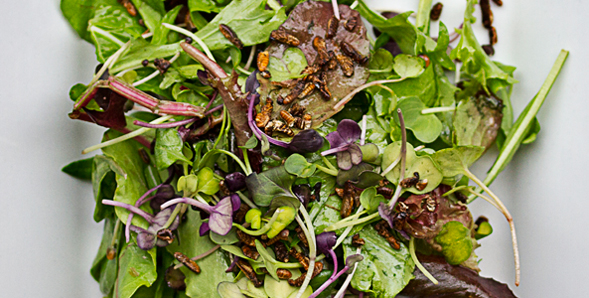 |
| Annie: No comment. |
| Matthew: I felt obligated to taste them to uphold my honor as a food writer (I try to never say no). I did so multiple times, once on a tasting panel to approve for sale, again for flavor profiles to describe them on the store, and in various recipes. But insects make me extremely uncomfortable & I’d rather not relive these experiences in order to describe them in depth. |
| Veronica: This was actually well before my time at Marx Foods. My parents grew up eating edible insects so when they got their hands on crickets again in the states, they were ecstatic. They couldn’t wait for me to try them and in grade school, I was simply not a fan. Nowadays though, I’d definitely recommend the Chapul Cricket Bars and Beetle Larvae. |
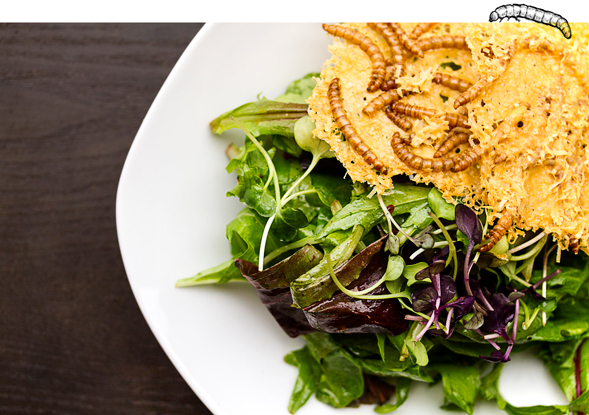 |
| Tracy: My first experience was in the Marx Foods test kitchen! We tasted all of the “bugs” before they hit the website and retail store. It was also my very first tasting panel as an employee for Marx Foods. Needless to say, they weren’t scary enough to turn me away, but a very hilarious tasting panel nonetheless. Justin was the bravest one and ate a giant water beetle that nobody else would touch. |
| Katy: It wasn’t as bad as I would have thought. But I didn’t try to eat the rhino beetle. Because fuck that. Wondering about those giant rhino beetles and water beetles? Check out this video from that infamous tasting panel. |
| Have you tried edible insects before? Tell us all about your first time trying them in the comments! |
 |
Becca Lee wrangles our social media accounts, blogger contests, and general marketing work as the Marketing Coordinator for Marx Foods. You can check out one of her many hair colors and read more about her (and her ridiculous sweet tooth) here. | |
A Day Gone Very Wrong Right!
 |
|
|
You know those days when you wake up and just have a feeling that something is going to go wrong? Well, the day of our Urban Picnic photoshoot, I woke up feeling just like that. It wasn’t just standard issue anxiety, either. There were REASONS. Katy, the star of our shoot, had been out the day prior, so I woke up knowing I might have to fill in for her last minute. Matthew had been out sick the day before, so I also might be on my own to direct the cooking scenes (would I have to direct myself?????). Ryan had been out on vacation, so he was relying on my prep work to make sure the shoot went smoothly. Oh, and did I mention we had rain in the forecast? |
|
 |
|
 |
 |
|
I tried to ignore my early morning nerves and went about my morning- took a shower, brushed my teeth, got dressed. Since there was a chance I’d be in the shoot I needed to select my outfit carefully- something summery that I could work in, but still look nice in for photos. No stripes that would look funny on video, and no crazy patterns that would conflict with the picnic blanket. I found the perfect dress. Well, the dress WAS perfect, until I leaned over to grab my lunch out of the refrigerator and the zipper split wide open, right down the back of the dress. Sigh. I was already running late, so I changed as fast as humanly possible, skipped breakfast, and ran out the door, catching my bus by the skin of my teeth. |
|
|
As luck would have it, my morning was the only part of the day that went awry. I made it to work right on time and found that Matthew and Katy were both in AND Matthew had already packed up the food Kim had prepped for the shoot! Once we packed up the car, Katy, Matthew, Matt, and I headed out to begin the shoot. |
|
 |
|
 |
 |
|
The day could not have gone more smoothly. The recipes Katy was finishing on camera came together in no time, so we ended up with nearly an hour to hang out and shoot the breeze before heading to our next location. We arrived at Kerry Park to its gorgeous view of the Space Needle and downtown Seattle, as well as Seattle’s signature overcast sky. Not as summery as we had hoped, but there was no rain in sight, so we were happy! |
|
 |
|
|
As we settled into the shoot and began take photos and video of the picnic scene, a HUGE tour bus pulled up the park. I began to panic as the bus unloaded like it was a clown car and person, after person, after person set upon the tiny park where we were holding our shoot. It could have been a disaster, but as with the rest of our shoot, the day was going our way! With minimal intervention, the group steered clear of our picnic scene and we got plenty of great, tourist-free shots. Not moments after we finished shooting and began to dig into the leftovers, I heard Ryan say “I think I felt a rain drop.” I felt one, and then another, and another. Then, one drop later, the sky opened up and it began to pour like it hadn’t poured in months! We hurriedly packed up our food, props, and photo gear, and bee-lined it back to the office, pleased that Mother Nature had timed her day so perfectly around our shoot. Broken zipper aside, the day was a success! |
|
 |
|
 |
Becca Lee wrangles our social media accounts, blogger contests, and general marketing work as the Marketing Coordinator for Marx Foods. You can check out one of her many hair colors and read more about her (and her ridiculous sweet tooth) here. | |
More of What We’ve Been Reading
Naturally Grown: An Alternative Label to Organic
Many people don’t realize that the increased cost of Organic isn’t just less efficient/more expensive growing techniques or farmers charging a premium for their work. Organic certification can be very costly. Sure, it helps ensure everybody’s following the rules, but it can also bar the door for small producers.
We actually sell at least a few products that could be considered organically grown, but can’t call them that, because they haven’t been certified.
The idea of people subsisting on industrially processed food replacement shakes isn’t exactly something that lights our fire. On the other hand, there are a lot of people out there who don’t have the time or energy to cook…and alternatives often offer incomplete nutrition and/or are unhealthy takeout.
As unappealing as we find Soylent’s ingredient list…we have to admit it’s better than what’s in a chicken nugget or a certain competing product….
A lot of people don’t realize that they could still be eating trans fats. As long as each serving of a food contains .5grams or less of trans fats, it can be rounded down to zero on nutrition labels.
Sure, that doesn’t seem like much…but as this article points out, as little as 2 or 3 grams per day can be a problem.
Why Are Pig Farmers Still Using Growth Promoting Drugs?
An excellent question that more people should be asking…
What We’ve Been Reading
Now a Test Can Tell If Your Pricey Cup of Cat Poop Coffee is Fake
Yep, that’s right, there are people pretending their coffee beans have been pooped by a cat when they haven’t. Just mull (brew?) that over for a second.
Now that you’ve wrapped your head around the concept of civet-poop-coffee-fraud…read this article to learn why people would want to pull such a “dirty” trick.
Bringing Home the Woolly Bacon from Hungary
Let’s be clear, the bacon itself isn’t actually wooly, the pigs are. This article discusses the heritage and wondrous properties of Mangalitsa pork – it also includes a fabulous photo of a mangalitsa pig, standing proudly like a stylishly coiffured porcine gentleman.
FDA Defining What ‘Gluten Free’ Means on Food Labels
Those of us who are gluten free or live with those on restricted diets know how tricky “gluten free” products and restaurant offerings can be. It can mean a lot of things and it isn’t always clear how gluten free they actually are. It sounds like the USDA’s finally stepping in to change that.
Ancestors’ Exposure to DDT May Contribute to Obesity
We hear about America’s Obesity Epidemic all the time…but this is the first time someone’s suggested that the cause is more complicated than processed/junk food. This fascinating (& horrifying) article suggests that the nation’s difficulty keeping the pounds off might not be entirely our fault and that personal genetics may be more complicated than previously thought.
Marx Foods Invites You to Bite Nite!
Marx Foods and 14 of Seattle’s top chefs are coming together to throw a party to raise money to support
WA Initiative 522 (which would require labeling GMOs). I’d love to see you there – Bite Nite’s going
to be the tastiest ticket in town!
For the price of admission you get:
| • | 15 amazing small bites from the chefs in attendance | |
| • | To rub elbows with local culinary greats like: Jim Drohman (Café Presse & Le Pichet) Matt Dillon (Sitka & Spruce, The Corson Building, Bar Sajor) Holly Smith (Café Juanita) Shane Ryan (Matt’s in the Market) Autumn Martin (Hot Cakes) Nicki Kerbs (Cupcake Royale) & more! |
|
| • | To support the Initiative with your ticket price – moving us a step closer to better information for consumers. | |
What We’ve Been Reading – July Edition
Lots of intriguing food articles have come out over
the last month or so…here are some of our favorites…check them out!
Eating Bugs: Would You Dine on Cicadas?
Can Farmed Trout Go Vegetarian?
Chef in a Box
Germany Drops its Longest Word
Your Choice in Utensils Can Change How Food Tastes
Savory & Sweet: A Taste for Infertility
I’ve also been reading about the rising unlabeled use of mechanical tenderizers (read more here) and a new drug called “Zilmax” in the US beef industry (my thoughts here).
Congrats Chris on being named Master Sommelier!
There’s nothing like watching someone you admire work their ass off and achieve an absolutely enormous goal. I could not be more proud of Chris Tanghe for becoming a Master Sommelier.
Most of you probably won’t be aware of the certification, the prestige that comes with it, or the incredible amount of time, work and effort that goes into it.
Let me put it in perspective for you. The Court of Master Sommeliers was founded around 1977 as an international organization to promote, test, and certify wine knowledge at the very highest level. They award the Master Sommelier diploma as the ultimate achievement a sommelier can attain.
You know how many Master Sommeliers there are now? 201. In the world.
Chris was one of 63 who took the most recent exam – which includes what is probably the most brutal blind taste test ever conceived – and one of only four who passed. His achievement has been seven years, 2000+ flash cards, and hours and hours and hours and hours of work in the making.
When it comes to wine, he is officially the fucking man.
That’s not just my opinion, either. This diploma is so cool that when someone earns it it’s news – read more over at The Seattle Met and Sip Northwest.
But I don’t want to gloss over Chris’s other culinary achievements. He may be one of the world’s beverage elite now, but he’s also no slouch when it comes to the kitchen. He’s studied at the very prestigious Culinary Institute of America, he’s cooked for many great restaurants, and he’s the chef behind about half the recipes on our blog. He has all of the gastronomic bases covered.
All this and he’s also a down to earth, solid, great guy and a wonderful friend.
Congratulations Chris, you’ve earned it!



